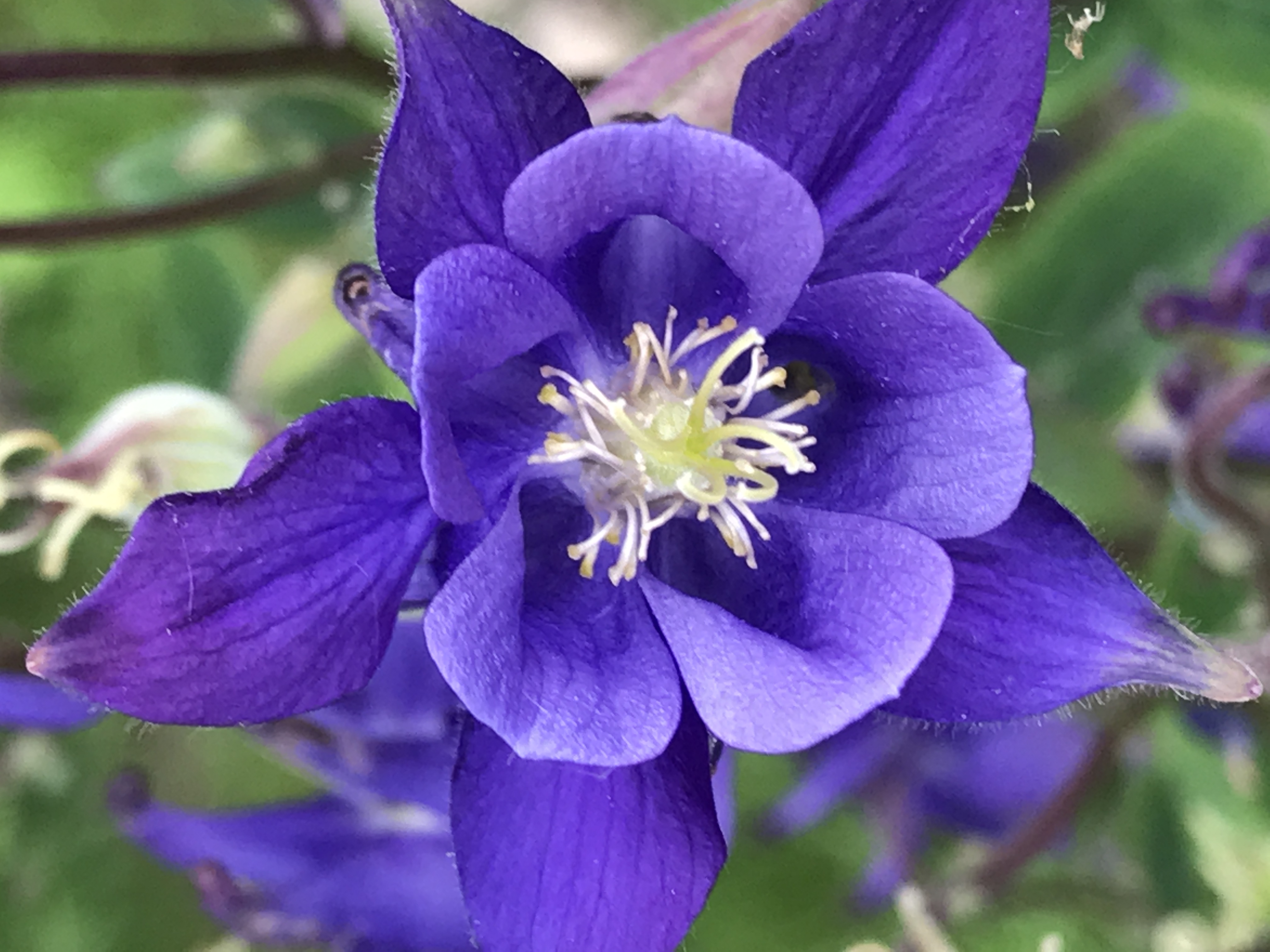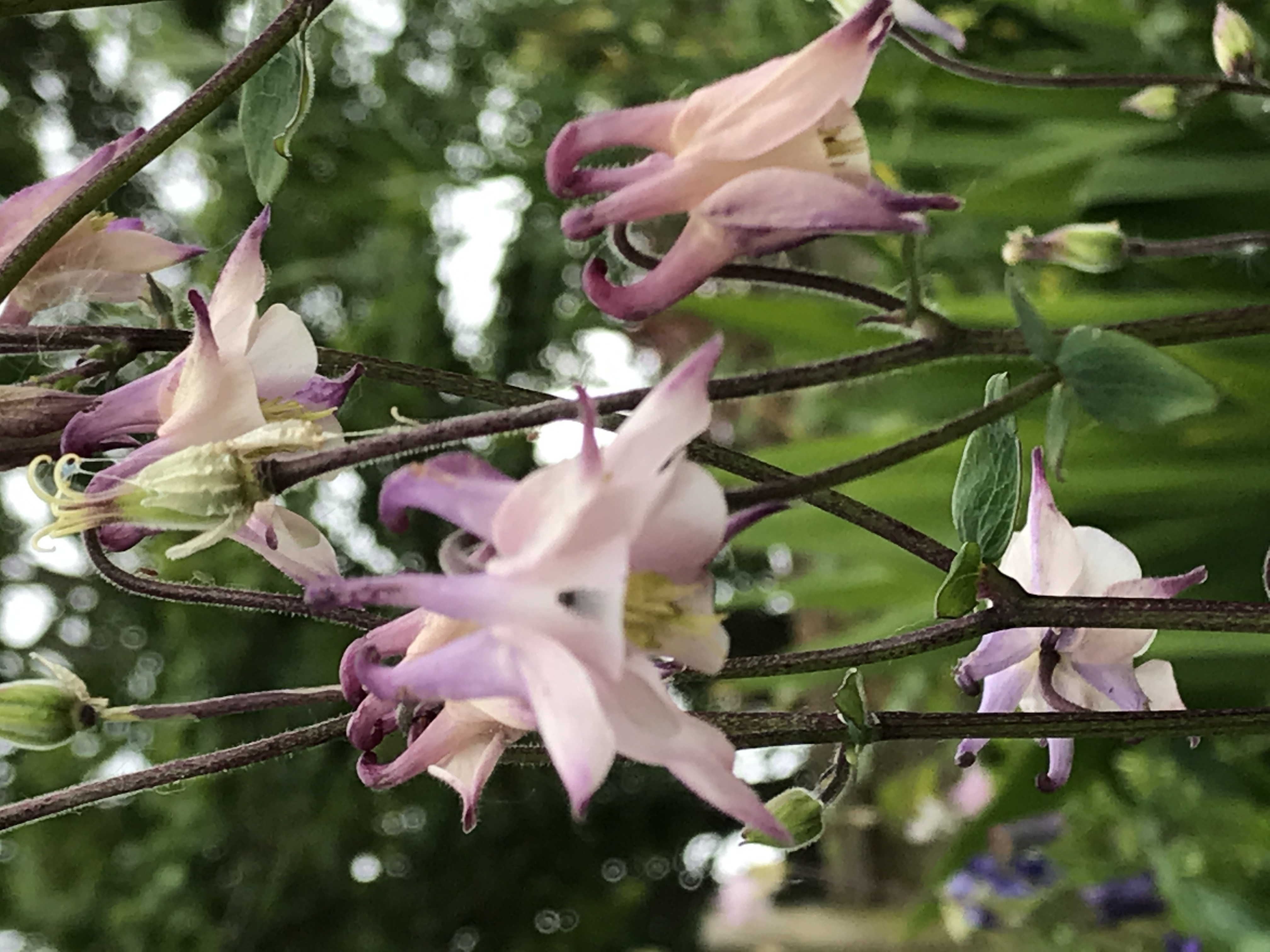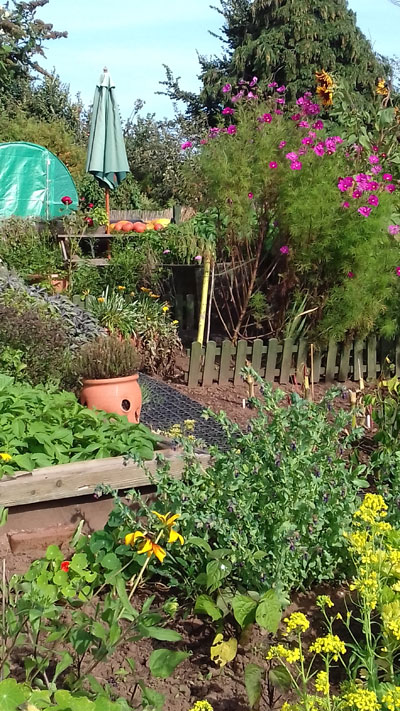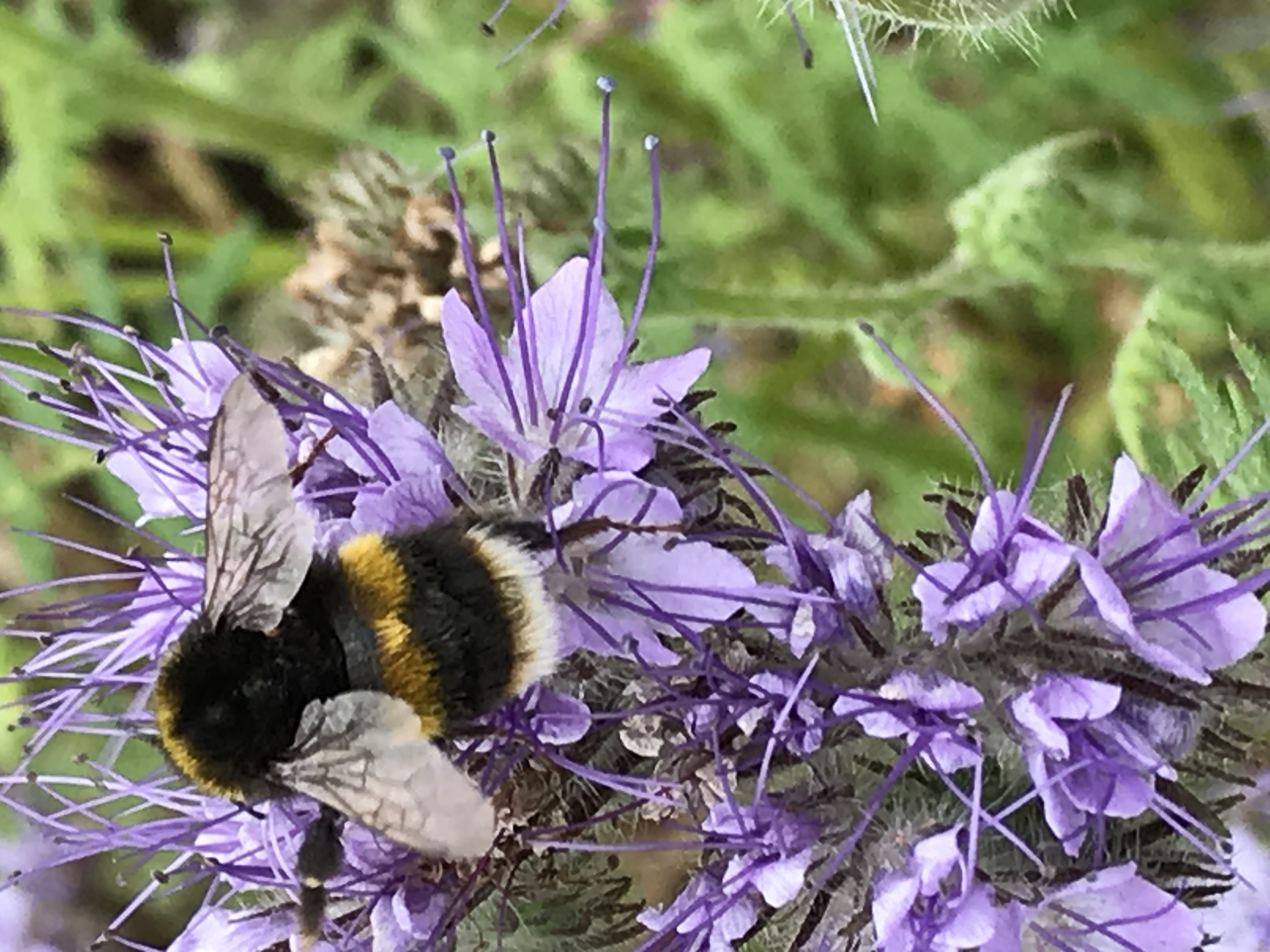 I am not quite sure where April and May went but they do seem to have passed me by. However, I have been busy as have the bees on the phacelia.
I am not quite sure where April and May went but they do seem to have passed me by. However, I have been busy as have the bees on the phacelia.
This is a buff-tailed bumble bee - it might be a worker because it has a white tail with a buff-coloured stripe at the start of the white.
These bees can be found in many countries because they are used as pollinators in glasshouses. In fact, there are places where it is no longer legal to import them such as Australia as they compete with native bees.
In this post you can read about camouflaging spiders, the best shrubs for pollinators and the flowers that are coming out now on the plot.
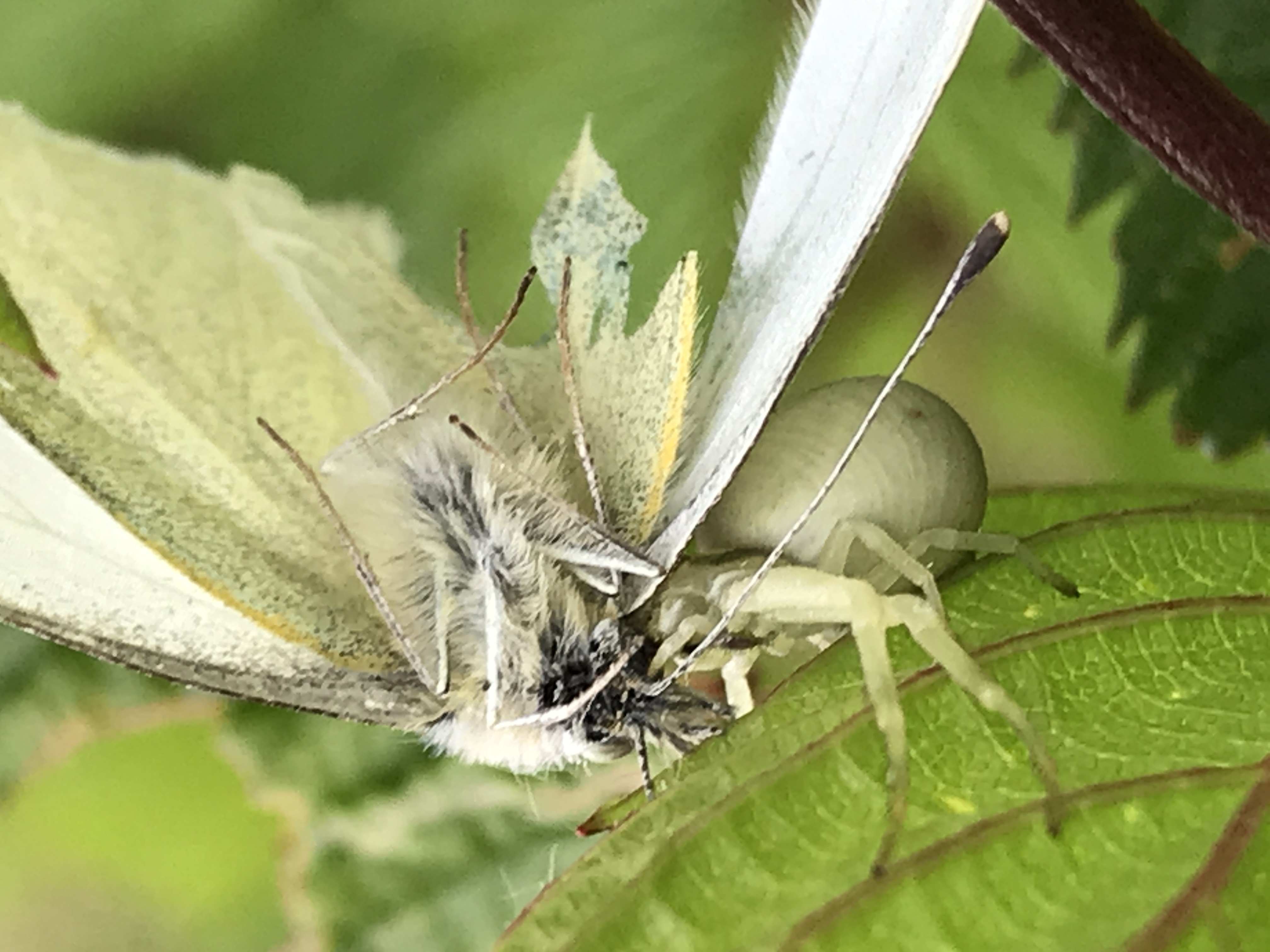 Bees are not the only wildlife on the plot though. As I walked past the Viburnum, on one leaf there appeared to be a spider wearing a butterfly on it's head.
Bees are not the only wildlife on the plot though. As I walked past the Viburnum, on one leaf there appeared to be a spider wearing a butterfly on it's head.
When I moved the leaf, the spider moved so it was obviously trying to get the butterfly somewhere where it could eat it. The butterfly looked like a large white.
The spider I am less sure about but it did look a bit like a crab and so I think it is a White Death spider (Misumina vatia).
The females are more often seen than the males, sitting on flowers waiting for bees, butterflies, moths etc. They are unusual in that they don't spin webs but rely on ambush and camouflage. Crab spiders can change colour to match the flower they are sitting on as long as it is on a spectrum between pale green, yellow, white and pale pink.
It can take up to three weeks for the spider to change from white to yellow so it has to sit there for a long time.
The photograph below shows a yellow version of the spider that I found about 10 days ago. It must have fallen off a yellow flower because it was almost luminous.
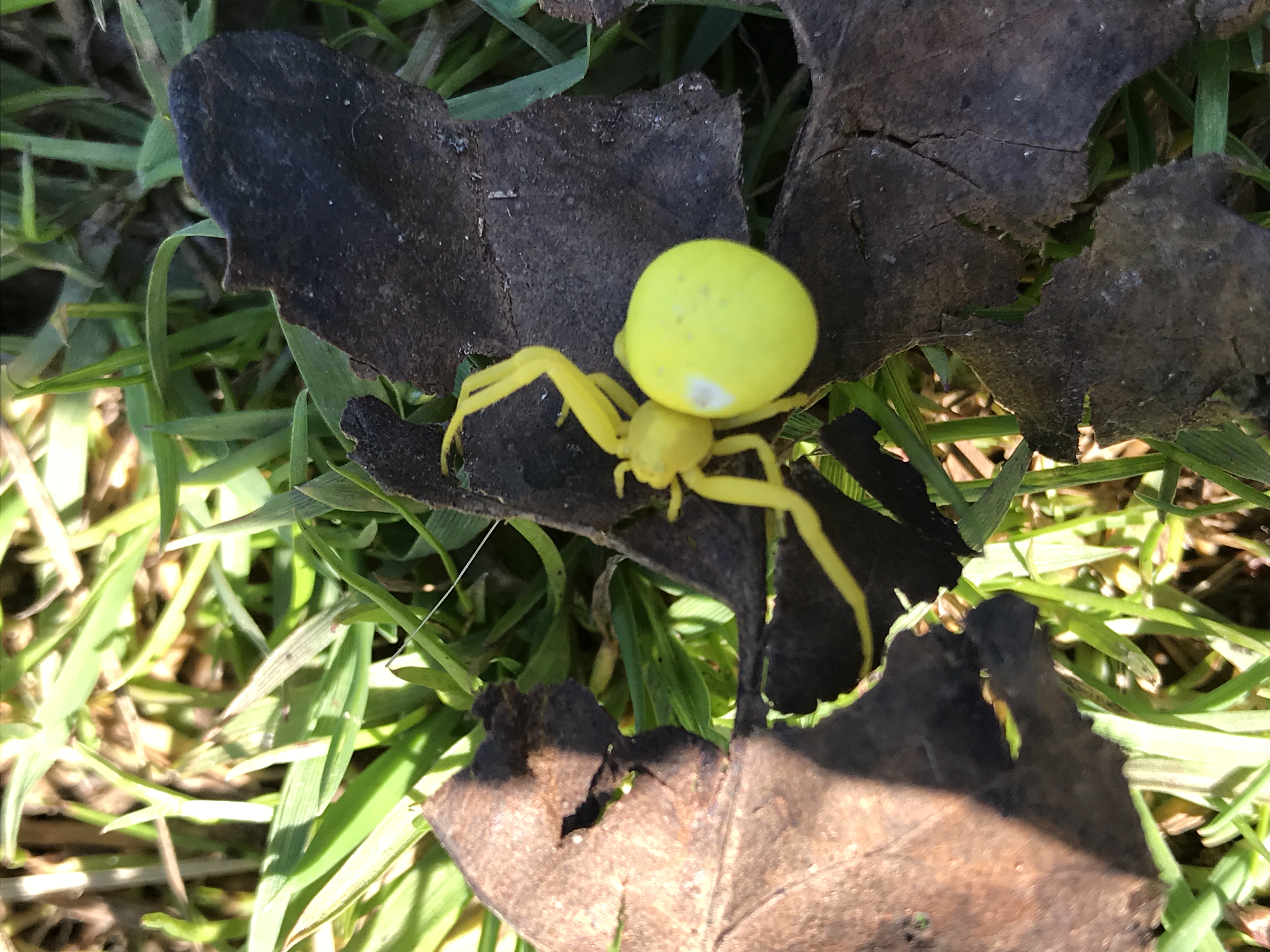 The spot on its body can be found on all the crab spiders and genetics decide on its colour and position. In North America, these spiders are called 'banana spiders' and they hide out on golden rod which we have on the plot but does not flower until the autumn.
The spot on its body can be found on all the crab spiders and genetics decide on its colour and position. In North America, these spiders are called 'banana spiders' and they hide out on golden rod which we have on the plot but does not flower until the autumn.
Each month there seems to be one plant that attracts more pollinators than others. In March it was the Vinca major, in April/May it was Skimmia japonica. You could hear the shrub buzzing before you got near to it and you could also smell it as well as it has a delightful scent. This month the star plant is a much more unassuming shrub Cotoneaster horizontalis with no scent and tiny flowers that don't even look open and yet it has hummed with bees and hover flies for several weeks now. It is a magnet for them. I couldn't get a picture of it because the bees flitted around so quickly but you can visit it on the plot near to the bug hotel.
And finally, the flowers that are popping up all over the plot are Aquilegias otherwise known as Columbine or Granny's bonnet. We have the standard purple but also pink and yellow ones. The flowers are nectar rich and attractive to bees.
